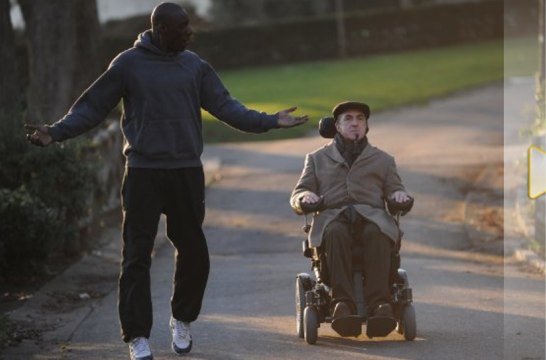Where Does Passion Come From?

I dreaded writing papers in college. I probably spent more time worrying about what I was going to write than actually writing. As much as I tried, I just couldn’t get excited about Kant’s categorical imperative or Plato’s take on justice. Did Kant correctly identify the origins of human morality? Should philosopher kings govern? Who knows. As a philosophy major, I preferred thinking over doing, a mental muse over a physical action.
My problem was obvious enough: the material didn’t excite me. I knew I enjoyed pondering the human condition but the so-called love of wisdom just wasn’t giving me my fix. Fortunately, I eventually stumbled across a few psychology books (empirical studies win over abstract reasoning) and found a passion for cognitive science.
Recently, I’ve become interested in intelligence, creativity and extraordinary achievement. One question that keeps me up is: what separates the greatest achievers from the rest of us? Literature on the subject is in general agreement in one area: it’s an unrelenting obsession that drives them, a willingness to put in 10,000 hours (+/- 5,000 hours) of deliberate practice. But what remains to be identified is where the passion comes from the first place. What made me passionate about cognitive science but not philosophy? Why Kahneman over Kant – Pinker over Plato?
For starters, when it comes to learning an academic subject or practicing a sport, genes matter. As psychologist Scott Barry Kaufman states in his Psychology Today article “Genius, Genes and Gusto: How Passions Find You“: “Genes can facilitate the rate of learning to a considerable degree. Case studies and research have repeatedly shown that many accomplished and creative individuals learn the requisite knowledge and skills of their domain faster than less accomplished individuals.” This means that while thousands of hours of deliberate practice is necessary for great achievement, genes can accelerate the rate we acquire knowledge or a skill.
What’s important is that small genetic advantages that assist the rate of learning can be highly consequential overtime. Consider what the scientists Stephen J. Ceci, Susan M. Barnett and Tomoe Kanaya of Cornell University term the multiplier effect. The idea is straightforward: small genetic differences can turn into large advantages that compound over a lifetime. For example, (this is taken from Geoff Colvin’s Talent is Overrated) imagine someone who is slightly above average in
eye-hand coordination, forearm strength, and reflexes. Initially, this individual may take satisfaction in doing slightly better at baseball than his schoolyard peers…. This satisfaction may lead such an individual to practice more, search more aggressively for others willing to play after school and on weekends, try out for teams (not just school teams but also summer league teams), get professional coaching, watch and discuss televised games, and so forth. Such an individual is likely to become matched with increasingly enriched environments for baseball skills…. Factors cascade over time because they multiply the effects of earlier, seemingly weak, factors.
Passion, then, might develop over time from a genetic advantage that gives rise to a superior physical or intellectual skill, which moreover provides an individual with a consistent source of gratification. In turn, this sense of satisfaction reinforces the individual’s willingness to continue to develop his or her skill. The combination of compulsive practice and passion leads to mastery and exceptional achievement.
To be sure, having a genetic boost doesn’t guarantee a multiplier effect. In addition, it’s possible that “events or situations [that] have nothing to do with innate traits could also set off multiplier effects.” But the point remains; genes play an important role when it comes to what we’re good at and what we’re passionate about.
This idea dovetails with a new study published in the Journal of Neuroscience conducted by Michael Treadway and David Zald at Vanderbilt University. The scientists gathered 25 volunteers and asked them to perform a button-pushing task. Treadway and Zald gave the participants two options to determine how willing they were to work for a monetary reward: an easy task with a $1 reward or a hard task for a $4 reward. Next, the participants were told that they had a high, medium or low probability of getting paid. The individual tasks, where participants were asked to either press a button 100 times in twenty-one seconds with their non-dominant pinky finger or 30 times in seven seconds with their dominant hand, lasted about 30 seconds. Not exactly fun.
While the participants tackled the tasks, Treadyway and Zald were busy measuring the activity of their dopamine neurons using a brain mapping technique called positron emission tomography (PET). The first thing they found was a greater dopaminergic activity in areas of the brain associated with reward and motivation for participants who were more willing to work hard in exchange for greater rewards. Secondly, they found an inverse relationship between dopamine activity and the insula, a part of the brain that has been associated with laziness. (The insula remains a fairly mysterious piece of cortex). This means, in short, that labor become love for some. For others, it evoked a stale and lackluster sense of motivation acutely captured by the likes of Jim Halpert, Peter Gibbons and Lester Burnham.
This helps us explain why great achievers go through all the pain – it’s not pain for them, it’s pleasure. As the tennis champion Monica Seles told the New York Times in 1999, “I just love to practice and drill and that stuff.” In other words, when great achievers work on their passion they aren’t doing a job or pursuing a career; they’re fulfilling an inner need – a ‘calling’ they are intrinsically motivated by. What’s important here is that this desire – the rush of dopamine – likely has a genetic basis.
In trying to identify where passion comes from it’s difficult to settle on one explanation. For starters, neuroscientists still have more questions than answers. As Treadyway explains, “At this point, we don’t have any data proving that this 20-minute snippet of behavior corresponds to an individual’s long-term achievement, but if it does measure a trait variable such as an individual’s willingness to expend effort to obtain long-term goals, it will be extremely valuable.”
The rigorous research required to fully understand where passion comes from has yet to be done. But it’s an exciting and promising line of study nonetheless. If nothing else, it reminds me how important my transition from philosophy to cognitive science was. Unlike my essay on Critique and The Republic, I actually enjoyed writing this article. All those clichés are true: do what you love.
Originally posted on my column at CreativityPost.com
Andy Dean Photography/Shuttershock.com





